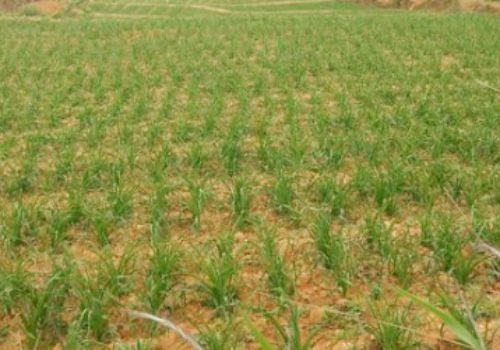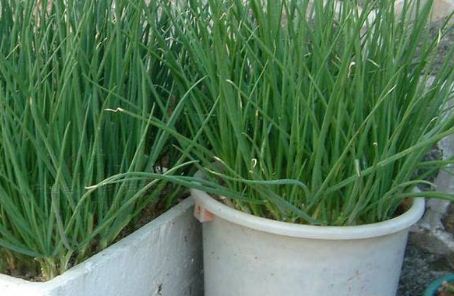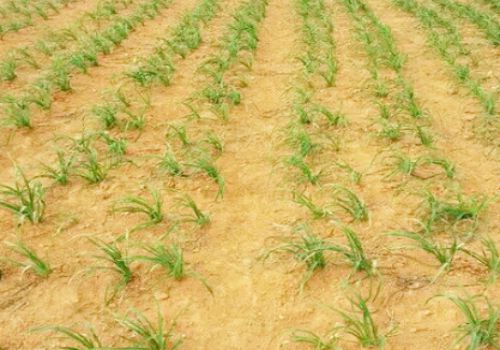How much is a daylily seedling? How to grow?
Cauliflower is also called Golden Needle, etc., because it is not only a kind of vegetable but also a kind of medicine, plus its adaptability is also very strong, it belongs to a kind of variety that is easy to grow, so many growers also want to grow it, so how much is the seedling of cauliflower? How do you plant it?
How much is a cauliflower seedling?
The price of cauliflower seedlings varies according to the quality, specification, producing area and market of cauliflower seedlings, but in general, the price of cauliflower seedlings is about 0. 05-0. 1 yuan. In addition, cauliflower is barren and drought-tolerant, and can be cultivated in geography or hillside. It can adapt to a wide range of light and can be intercropped with taller crops. The lower part of the ground is not cold-tolerant to-10 ℃. Avoid too wet soil or stagnant water, the common propagation methods in production are ramet propagation, cutting propagation and seed propagation.

Second, how to grow day lily?
1. Methods of reproduction
The split propagation of cauliflower is the most commonly used propagation method, one is to dig out all the mother plant clusters and replant them, and the other is to dig out part of the plants from one side of the mother plant cluster to make seedlings, leaving them to continue to grow, but the roots should be cut as little as possible when digging and dividing seedlings. On the other hand, after the cauliflower is harvested, the cuttings can be selected from the middle and upper part of the flower, if the bract is bright green and the growth point under the bract is obvious, it can be cut off about 15 cm above and below the growth point, and it can be slightly curved and cut into the soil for about 1 week to take root and bud. The seeds can be obtained by artificial pollination of cauliflower by sowing method. The fertile vegetable garden soil is used as the seedbed during sowing. The seeds are soaked in 25 ℃ warm water for 48 hours, and the seeds are covered with soil 2 cm after sowing. Usually seedlings can emerge in one week. After emergence, the greenhouse temperature is gradually reduced to adapt to the external climate.
2. Reasonable close planting
Close planting of cauliflower can give full play to its population advantage, with wide row 60-75cm * narrow row 30-45cm, hole spacing 9-15cm, 2-3 plants per hole and about 3000-5000 plants per mu.
3. Appropriate deep planting
The root group of cauliflower grows around the short stem with the characteristics of one layer a year, and the root position moves up year by year from bottom to top, so proper deep planting is beneficial to plant survival and prosperity, and the suitable planting depth is 10-15 cm.
4. Cultivate the soil by ploughing.
During the growth period, cauliflower should be ploughed 3-4 times according to growth and soil consolidation, usually the first time when the seedlings were unearthed, and the second-fourth time in the bolting stage combined with mid-tillage to cultivate soil.
5. Fertilization management
Cauliflower requires adequate basal fertilizer, early application of seedling fertilizer, heavy application of bolting fertilizer, and supplementary application of bud fertilizer, in which the basic fertilizer partially stops growing on the field of cauliflower, that is, autumn seedlings wither after frost or when planting, with organic fertilizer as the main application of high-quality farm manure 2000 kg / mu and calcium superphosphate 50 kg / mu. On the other hand, seedling fertilizer can promote the early growth and rapid development of leaves, which should be applied at the beginning of cauliflower germination, calcium superphosphate 10 kg / mu and potassium sulfate 2 kg / mu, and bolting fertilizer should be applied at the beginning of bolting. At this time, cauliflower needs more fertilizer, topdressing urea 15 kg / mu, calcium superphosphate 10 kg / mu and potassium sulfate 5 kg / mu. The bud fertilizer should be topdressing 5 kg of urea per mu within 7-10 days after the beginning of picking, and 0.2% potassium dihydrogen phosphate, 0.4% urea and 1-2% superphosphate aqueous solution should be sprayed on the leaves every 7 days during the picking period.
Summary: the above is about the introduction of cauliflower seedling prices and planting methods, it should be noted that the above cauliflower seedling prices only as a reference, the specific price should be based on the actual price, hope to help friends in need!
How to grow day lily? Planting techniques of cauliflower
Cauliflower is a kind of vegetable that many friends like. How is cauliflower grown? Next, I would like to introduce the planting techniques of cauliflower.
1. Site selection: cauliflower likes warmth and strong adaptability, but the aboveground withered in case of frost; developed root system, strong drought tolerance, good growth in hillside land; lax soil requirements, sand, clay, Pingchuan, mountainous areas can be planted. But the red and yellow soil is good.
2. Deep ploughing and soil preparation: cauliflower is a perennial crop. When ploughing the land, we should pay attention to deep ploughing. Deep ploughing is beneficial to root growth. The depth of ploughing is 20-30cm. In order to facilitate the daily management in the future, the width of the border should be 1-1.5m, and the length of the border should be unlimited, based on the principle of convenience.
3. Propagation: (1) seed propagation: this is the method of rapid production of seedlings, but the germination rate of cauliflower seeds is low, so it must be soaked to accelerate germination before it can be planted one year after sowing. (2) ramet propagation: the sturdy and disease-free plant clumps were selected, and the tillers of the plant clusters from the bud harvest to the autumn seedling were dug up as seedlings, and the roots were cut from the shortening stem, the senescent root and the lumpy fleshy root were cut off, and the long succulent root was cut short to plant. (3) slicing propagation: from late August to early October, the old cauliflower plants were taken, the green leaves were cut off, and the roots with 5-7cm length were cut evenly into 2-5 slices with a knife, and then soaked 20-30min with 800-30min carbendazim or topiramate, and then planted. (4) split bud propagation: numerous hidden buds are arranged on both sides of the rhizome of cauliflower, with main buds and lateral buds at the top, artificially destroying its apical dominance and promoting lateral bud germination. The method of bud division can be used to improve the reproduction rate. (5) tissue culture propagation: in order to achieve the purpose of high speed, good quality, low cost and high efficiency, the technique of industrial tissue culture can also be used.
4. Growth stage: cauliflower can be divided into seven growth stages: germination from February to mid-March, leaf expansion from mid-March to late May, bolting from late May to mid-June, bud and flowering from mid-June to early July, postharvest withered leaves from early July to early August, autumn leaf expansion from early August to early autumn frost, and dormancy from frost to January the following year.
5. Timely transplanting and reasonable close planting: from the end of flower bud harvest to next year's spring seedling, it can be transplanted separately after flower bud harvest. Winter seedlings can occur in the same year, new roots can be produced, nutrients can be accumulated, and bolting can be put into production the next year. 16000 holes per mu are planted in rice fields and vegetable gardens with high soil fertility. 2000 holes per mu are planted in sloping land and poor ridge soil. It is better to alternate wide and narrow rows in the way of planting. After transplanting, the roots were watered in time, and covered with plant ash. After survival, 100-200 kg of human feces and urine per mu were used as root fertilizer.
6. Scientific fertilization and watering: rational drainage and irrigation is rainy in spring. We should do a good job in clearing ditches and drainage of cauliflower in time to prevent waterlogging. In the high temperature and drought season from July to August, we should draw water in time to resist drought, keep the soil moist, prolong the harvest period, and increase yield. Water diversion and drought resistance should be carried out sooner or later, so as to achieve urgent irrigation and drainage, not flood irrigation. Cauliflower is very fond of and tolerant to fertilizer, especially for nitrogen, phosphorus and potassium. Fertilization should be carried out in spring seedling germination stage, flowering stage and winter seedling development stage. Spraying Huazhuangtiling at the beginning of bolting can enhance the drought and disease resistance of the plant, prolong the leaf function, promote the stout buds, reduce the shedding of young buds and increase the yield.
7. Harvest: the suitable time for harvest is buds, that is, when the buds are full and not open, the middle is golden, the ends are green, the top is black, and the sharp mouth seems to be open. The time requirement for picking cauliflower is very strict, too early is not good, too early is green buds, low sugar content, light weight and poor color of fresh buds, resulting in poor color and low yield; picking buds too late, the buds are too mature and loose buds appear, and the juice is easy to flow out, the product quality is poor, and it is difficult to preserve. The harvest season is generally from June to the end of August. The suitable harvest time is that the flower bud is just 1-2 hours before the split mouth, when the yield of cauliflower is high and the quality is good. The best time to pick is from 13:00 to 14:00. The buds picked should be steamed in time to prevent the grin from blooming.
The above is some of the introduction of cauliflower planting technology, planting cauliflower friends, you can refer to these planting techniques, combined with the actual planting conditions, reasonable planting.
Planting techniques of cauliflower how to grow cauliflower
Cauliflower is a kind of vegetable that is resistant to high temperature and low temperature, which is more common in summer every year. Sales volume has also increased in recent years due to people's better understanding of cauliflower. There are a lot of people want to grow it, want its high yield, mainly to master planting technology.
Planting techniques of cauliflower
The main results are as follows: 1. Select the seedlings and generally dig out the old roots of 1 / 3 from the old yellow flowers that have been growing for many years or use the seedlings propagated by slicing and sprouting as seedlings. If you use the old root as a seedling, you should break the bud and shake it and "pick a small piece", that is, the main root in the middle below the rhizome.
Remove the rotten roots, leaving a layer of branches above, each with a single bud.
2. Planting time. Cauliflower can be planted except for prosperous seedling stage and picking stage, generally in spring and autumn, before and after the Qingming Festival and after the soil is thawed.
3. The form of planting. Planting in wide and narrow rows with 2 rows in each row, with a wide row spacing of 1.3 meters and a narrow row spacing of 0.6 meters. After planting, the seedlings are exposed to the surface of the earth by 1 cm, and rehydrated to slow down the seedlings.
① single hole planting method. The distance between the acupoints is 0.5m, and each hole is an equilateral triangle with a side length of 0.2m, with three plants per corner, 1400 holes per mu and 4200 seedlings per mu.
② single-row and double-plant method. The distance between plants was 0.4m, 2 plants per hole and 3500 seedlings per mu. 4. The depth of cauliflower planting is closely related to the high yield or sooner or later, the planting is shallow, the vegetables are divided quickly, and enter the high yield period 1-2 years earlier. According to several years of practice, it is appropriate to plant 20 cm deep.
How to grow cauliflower
1. Reasonable close planting: close planting of cauliflower can give full play to population advantages, increase the number of tillers, bolting and buds, and achieve the purpose of increasing yield. Generally adopt wide and narrow row cultivation, wide row 60 cm 75 cm, narrow row 30 cm 45 cm, hole distance 9 cm 15 cm, planting 2 plants per hole, planting 45000 ~ 75000 plants per hectare, and the peak yield period reaches 1.5 million ~ 2.25 million plants / ha.
2. Appropriate deep planting: the root group of cauliflower grows from around the shortened stem, with one layer a year, and the root position moves up year by year from bottom to top, so proper deep planting is beneficial to plant survival and prosperity, and the suitable planting depth is 10-15 cm. Root water should be watered after planting, and the soil should always be kept moist before autumn seedlings grow, so as to facilitate the growth of new seedlings.
3. Cultivating soil in middle ploughing: cauliflower is a fleshy root system, which needs fertile and loose soil environmental conditions in order to be beneficial to the growth and development of the root group. During the growth period, intertillage should be carried out for 3 times according to the growth and soil consolidation, and the first time should be carried out when the seedlings are unearthed. The second to fourth times in the bolting stage combined with mid-tillage to cultivate the soil.
Fertilization techniques of cauliflower
1. Seedling fat. Seedling fertilizer is mainly used for seedling emergence and long leaves to promote early growth and rapid development of leaves. Seedling fertilizer should be applied sooner rather than later, topdressing at the beginning of sprouting of cauliflower, calcium superphosphate 150kg/hm2 and potassium sulfate 75kg/hm2.
2. Lei Fei. Bud fertilizer can prevent cauliflower from getting rid of fertilizer and early senescence, increase bud rate, prolong picking period and increase yield, and urea 75kg/hm2 should be applied within 7-10 days after picking. At the same time, during the picking period, 0.2% potassium dihydrogen phosphate was sprayed on the leaves every 7 days or so, 0.4% urea, 1%-2% superphosphate (filtered) aqueous solution, and 15~20mg/ Kg920 was sprayed once after 17:00, which had obvious effects on strengthening buds and preventing bud removal.
Pest control of cauliflower
1. Leaf blight. Leaf blight generally harms the leaves of plants, with white round spots at first, then gradually withered, and black mildew if it is too wet. The specific treatment is to spray chlorothalonil on the leaf surface with the same frequency and frequency as above.
2. Anthrax. Anthrax damage is also mainly on the leaves, leaf tips will gradually change from dark green to dark yellow, resulting in small black spots. Even the leaves will die. The specific method of prevention and control is to spray Bordeaux solution of 1purl and 100 or chlorothalonil in time at the beginning.
3. Red spider. When the red spider harms cauliflower, it will suck up juice on the leaves, showing gray spots, and if serious, it will also cause the plant to die. It can be sprayed with 73% propargite 2000 times solution.
When planting cauliflower, you need to do a good job of site selection. Cauliflower can't stand stagnant water, so drainage should be done well. In the later stage of planting, it is necessary to strengthen the management of fertilizer and water work. Cauliflower is vulnerable to insect pests, so the work of pest prevention and prevention should be done in a comprehensive way. Only when these are done well, the growth of cauliflower will be good and the yield will be high.
- Prev

When do potted chives usually be sown? What are the main points of planting methods?
Small chives are no stranger to us, for example, when we eat noodles, stew, and mix cold dishes, we all like to sprinkle a handful of finely chopped chives, which is what we call chopped onions. As one of the commonly used seasonings, small chives have a strong flavor, and some people can't accept its taste.
- Next

Introduction to the planting method of "precious wild vegetables" cauliflower!
Cauliflower, also known as brain cauliflower, is a kind of precious wild vegetable in China. It is liked by many people because of its high nutritional value and its effects of anti-inflammation, clearing heat and calming the mind. In addition, its high survival rate, planting prospects and economic profits make many growers also want to plant.
Related
- Fuxing push coffee new agricultural production and marketing class: lack of small-scale processing plants
- Jujube rice field leisure farm deep ploughing Yilan for five years to create a space for organic food and play
- Nongyu Farm-A trial of organic papaya for brave women with advanced technology
- Four points for attention in the prevention and control of diseases and insect pests of edible fungi
- How to add nutrient solution to Edible Fungi
- Is there any good way to control edible fungus mites?
- Open Inoculation Technology of Edible Fungi
- Is there any clever way to use fertilizer for edible fungus in winter?
- What agents are used to kill the pathogens of edible fungi in the mushroom shed?
- Rapid drying of Edible Fungi

